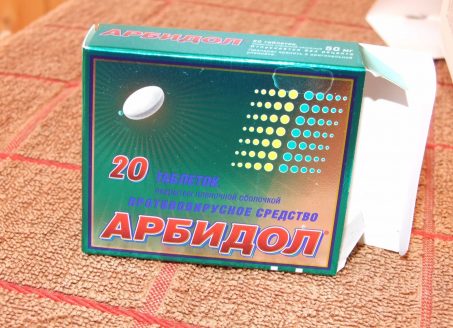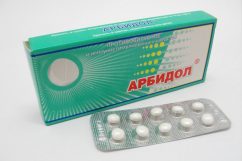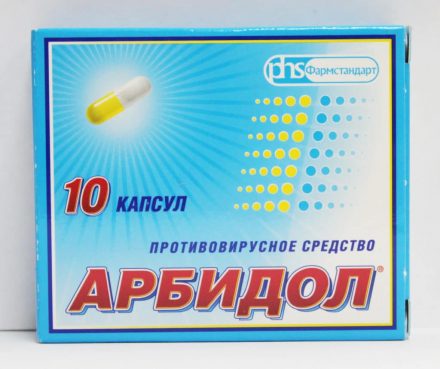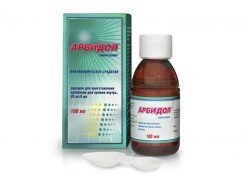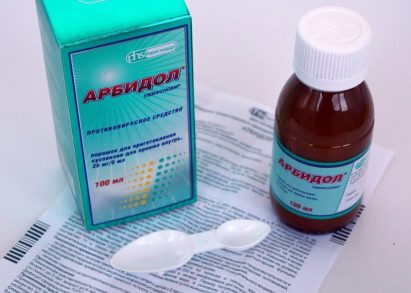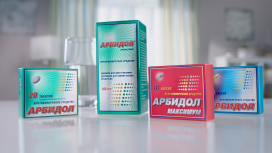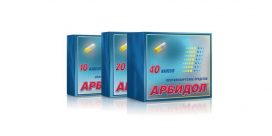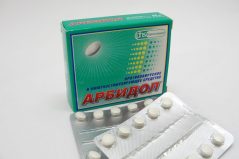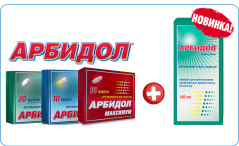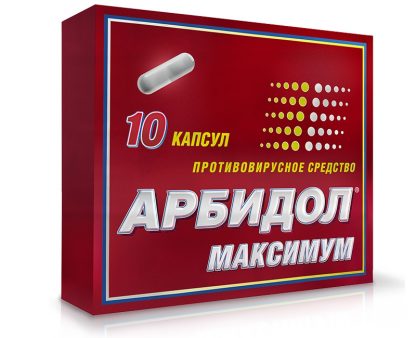The modern cold medicine market is filled with many drugs. The greatest excitement arises with the onset of cold weather. The drug Arbidol to a greater extent occupies a leading position as a cure for the common cold, but the spectrum of its use is much wider.
Material Content:
- 1 Description of the release form and composition
- 2 Pharmacological action, pharmacodynamics and pharmacokinetics
- 3 What is Arbidol prescribed for?
- 4 Instructions for use and dosage for adults and children
- 5 During pregnancy and lactation
- 6 Drug interaction
- 7 Contraindications, side effects and overdose
- 8 Antiviral drug analogues
Description of the release form and composition
For ease of use, the medication is often produced in several formats. Arbidol can be found in 3 dosage forms:
- White tablets with a slightly yellowish-green tint in the film membrane, which is light or slightly beige. Weight is 0.005 g.
- Capsules of 2 varieties with a difference in dosage - yellow gelatin with 50 mg of the active substance or white with a yellow cap, in which 100 mg of the drug. Both species contain a mixture of white powder and granules with possible yellowish-green or beige shades.
- A powder with granules from white to barely beige in color with a subtle smell of fruit is diluted to a state of a uniform suspension. It may have a more pronounced aroma and a yellowish cream tint. The powder is released in dark glass bottles of 125 ml with 37 g of dry composition, which is then dissolved. Included is a measuring spoon.
For a more accurate calculation of the amount of syrup, you can use a special medical syringe for liquid medicines.
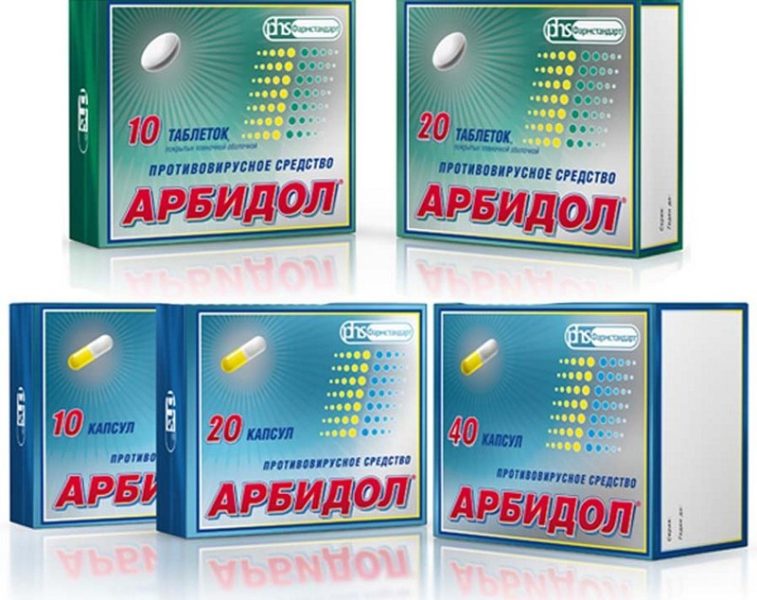 The difference in composition in all forms of release is not significant. Umifenovir hydrochloride is the active ingredient. The tablets and capsules in the supplement contain:
The difference in composition in all forms of release is not significant. Umifenovir hydrochloride is the active ingredient. The tablets and capsules in the supplement contain:
- microcrystalline cellulose;
- potato starch;
- povidone;
- croscarmellose (in tablets);
- calcium stearate;
- colloidal silicon dioxide (in capsules).
The tablet is surrounded by a mixture of titanium dioxide, hypromellose, macrogol and tween 80. The capsule consists of a gelatin shell with the presence of titanium dioxide, quinoline yellow, methyl, propyl parahydroxybenzoate, as well as dyes.
Powder for suspension also has umifenovir, but with the addition of:
- sucrose;
- maltodexin;
- pregelatinized starch;
- sodium chloride;
- sodium benzoate;
- banana or cherry flavor.
The syrup has two different tastes so that the child can choose at his discretion. A particular dosage form is prescribed by the therapist, taking into account the characteristics of the patient.

Pharmacological action, pharmacodynamics and pharmacokinetics
Arbidol is in the antiviral group of drugs. Due to the features of the mechanism of action, it has a specific effect on viruses and is able to repay their activity. The medicine protects against influenza A and B infection with subtypes. It copes well with acute respiratory viral infection, has a moderate effect of immunomodulating properties.
The mechanics of antiviral effects classify Arbidol as a fusion inhibitor. It acts as an obstacle between the cell membranes of the body and the fat-containing membrane of the virus by interacting with its hemagglutinin.
The ability of Arbidol to form interferon in the body helps the immune system recover at the cellular level. The number of blood lymphocytes increases, in macrophages the phagocytic function improves, and the number of natural cell killers also increases. This allows the body to become less susceptible to viral infections.
The medication reduces the risk of complications, prevents chronic diseases of a bacterial nature, reduces the duration of the disease, reduces the manifestation of general intoxication. If taken orally and not exceed the recommended doses, then the medicine is quite harmless.
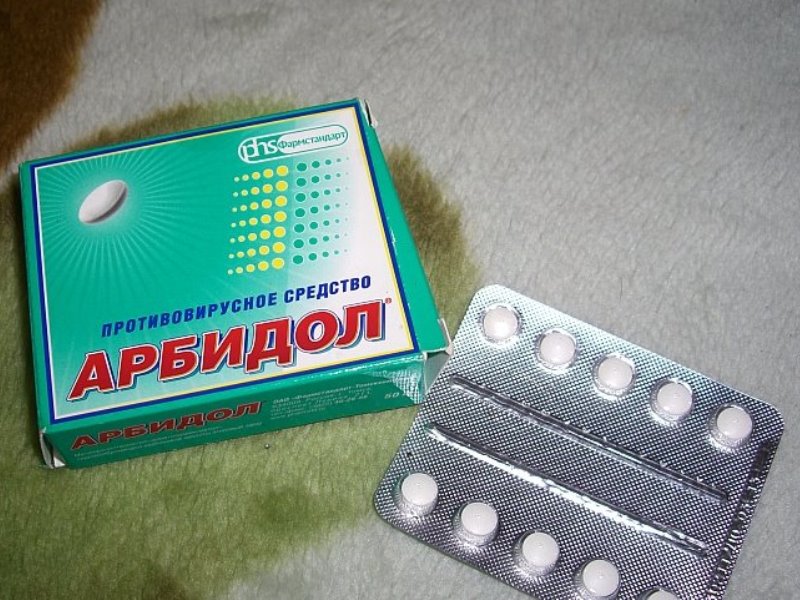 The drug has a high absorption. It penetrates evenly into all tissues and organs. The concentration in the blood reaches a maximum after 1.5 hours, which depends on the dose taken. It is metabolized by the liver. Within 18-22 hours, up to 90% of the drug is excreted. A little less than half the amount goes unchanged with bile, a small amount is excreted through the kidneys.
The drug has a high absorption. It penetrates evenly into all tissues and organs. The concentration in the blood reaches a maximum after 1.5 hours, which depends on the dose taken. It is metabolized by the liver. Within 18-22 hours, up to 90% of the drug is excreted. A little less than half the amount goes unchanged with bile, a small amount is excreted through the kidneys.
What is Arbidol prescribed for?
Because of its therapeutic properties, the drug has a certain spectrum of action. Capsules and tablets Arbidol are prescribed more often for adult patients, syrup is more suitable for children. Reasons for appointment:
- for preventive purposes and as therapy for influenza and SARS;
- for the treatment of severe acute respiratory syndrome (SARS) with the possible occurrence of pneumonia or bronchi;
- in the drug complex during manifestations of pneumonia or chronic bronchitis;
- during the recurrence of herpes infection;
- after surgery to prevent infectious complications and maintain immunity;
- indicated for children to prevent disorders in the gastrointestinal tract as part of complex therapy for rotavirus infection.
Arbidol in tablet form is recommended for small patients only from the age of three.

Instructions for use and dosage for adults and children
The drug is taken orally before meals.
The suspension mixing process:
- Boil water, cool to 18–20 degrees.
- Pour the powder with 30 ml of water or fill the bottle with 2/3 of its volume.
- Screw on the lid, turn upside down. Shake well until the mass is homogeneous.
- Add more water to the mark on the bottle and shake again. The result will be 100 ml of the finished suspension.
Shake well before taking the co-gustav. The resulting syrup was developed specifically as a children's Arbidol.
Ready suspension is stored no more than 10 days!
Based on the instructions for use, a single dose of Arbidol is calculated in this way:
- at the age of 2-6 years, 0.005 g in tablet form (1 pc.) or 10 ml in syrup is prescribed;
- children 6-12 years old - 0.01 g of a similar form (2 pcs.) or 20 ml in suspension;
- from 12 years old and for adult patients - 0.02 g in tablets (4 pcs.) or 40 ml of syrup.
The necessary dose for preventive measures for all age groups:
- during the wide spread of influenza or acute respiratory viral infections, in order to prevent exacerbation of complications: from 2-3 years old and for adult patients - a single dose (s.d.) - 2 doses per week - 21 days;
- after contact with a carrier of influenza virus, SARS and SARS: from 2-3 years to adulthood - daily, 1 p. d. - from 10 days to 2 weeks;
- to prevent complications after surgery: both children and adults - 1 p. d. 2 days before surgery - on the 2nd and 5th day after surgery.
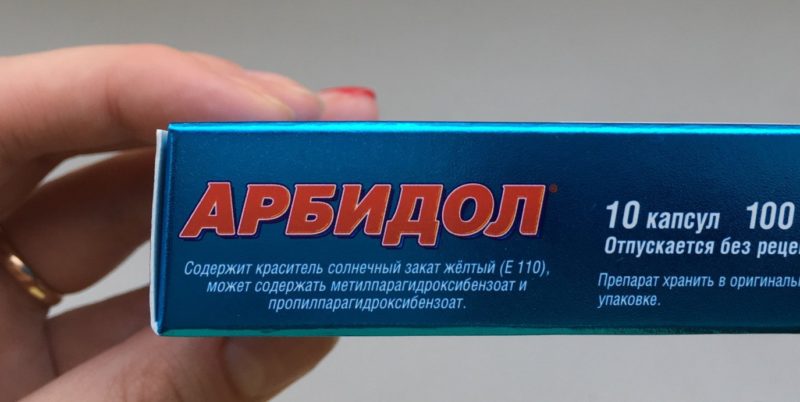 Arbidol treatment also takes place according to a certain scheme:
Arbidol treatment also takes place according to a certain scheme:
- flu and SARS: from 2 years old to children and to adulthood - 1 p. d., 4 doses per day - 5 days course;
- complications with influenza or SARS: for children and adults - the main five-day intake, then weekly 1 p. d. within 30 days;
- with SARS: from 12 years to adulthood - 1 p. d., per day 2 doses - 7-10 days;
- complex treatment of chronic infections after a cold (bronchitis, herpes): 1 p. d. - per day 4 doses - 7 days - then 30 days - twice a week;
- with pediatric gastrointestinal upset in complex treatment: from 2-3 years and older - 1 p. d. - on the day of 4 admission - 5 days.
The use of Arbidol should coincide with the onset of the initial symptoms of the disease, a maximum of 3 days from the time of their manifestation. After 3 days from the first use of the drug, the disease should recede. If relief does not come, you should re-visit the therapist to correct the appointment.
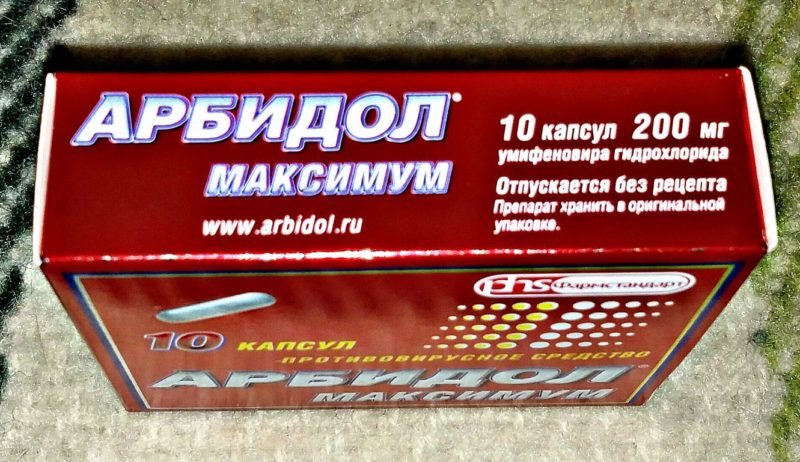
During pregnancy and lactation
There are contraindications when using Arbidol in the first trimester of pregnancy. This is the most fragile embryonic period, when the use of any medicine should be minimized.
During the II and III trimester, the drug is used when, according to the doctor, it is really necessary if the risk for the development of the child is less than the benefit that the mother will receive.
There is no exact data on whether Arbidol is present in breast milk during lactation. In order to avoid possible consequences when the baby is breast-feeding, it is better not to take the drug.
Drug interaction
Arbidol in complex antiviral therapy is often prescribed together with vasoconstrictor, antipyretic and mucolytic drugs. They interact well.
No noticeable negative effects were observed when Arbidol was taken with other medicinal products.
Contraindications, side effects and overdose
The medication is categorically not recommended for children under two years of age, and also if hypersensitivity to any of its components is present. Caution must be exercised when using the suspension format for persons with diabetes mellitus, as well as for patients with fructose intolerance.
Arbidol has low toxicity and is favorably perceived by the body. Sometimes there are manifestations of subtle side effects that quickly pass. In exceptional cases, it causes allergic manifestations.
Data on overdose and a negative reaction to it have not been recorded.
Antiviral drug analogues
Arbidol is considered an effective fast-acting agent. It is widely used for treatment and as a prophylaxis for the occurrence of viral infection. It is possible to replace by means with similar properties, only the basis of the medication should be another active substance. The structural component of Arbidol has no analogues.
Only a doctor can correctly choose a medicine for substitution. Adult patients are most often prescribed Aflubin, Amizon, Ergoferon, Anaferon, Cycloferon, Ingavirin or Kagocel in the appropriate dosage.
Analogues of children's Arbidol are:
- Grippferon (from birth);
- Anaferon (from 1 month from birth);
- Orvirem (from 1 year);
- Tamiflu (from 1 year);
- Kagocel (from 3 years old).
To choose a dosage and dosage form, you need to contact a pediatrician. It will take into account the weight and age of the child when calculating the amount of a single dose or suggest possible analogues.
Health is the main wealth of man and Arbidol helps to preserve it. This effective drug is able to prevent infection with a viral infection and help in the treatment if the disease has nevertheless entered the body. He is able to become a good helper for both adults and children.


